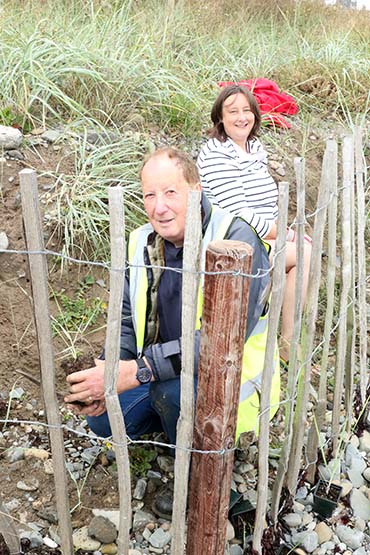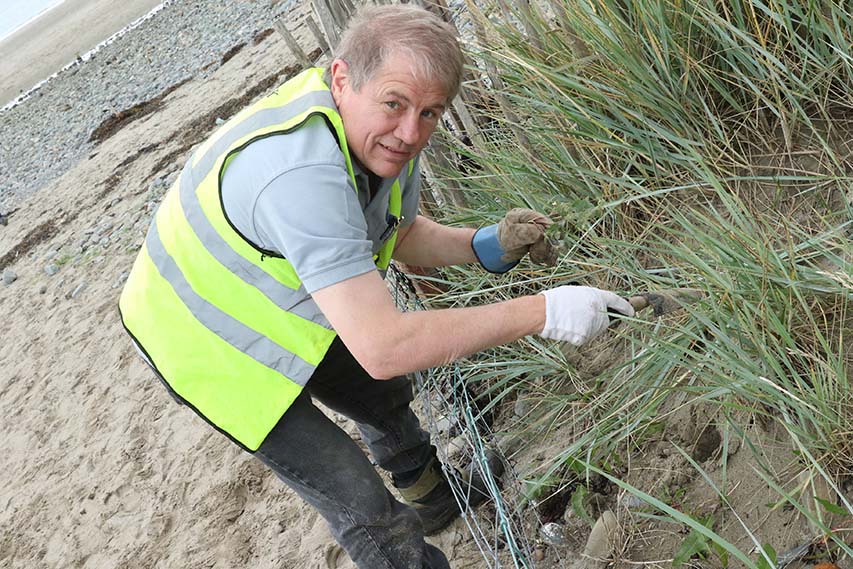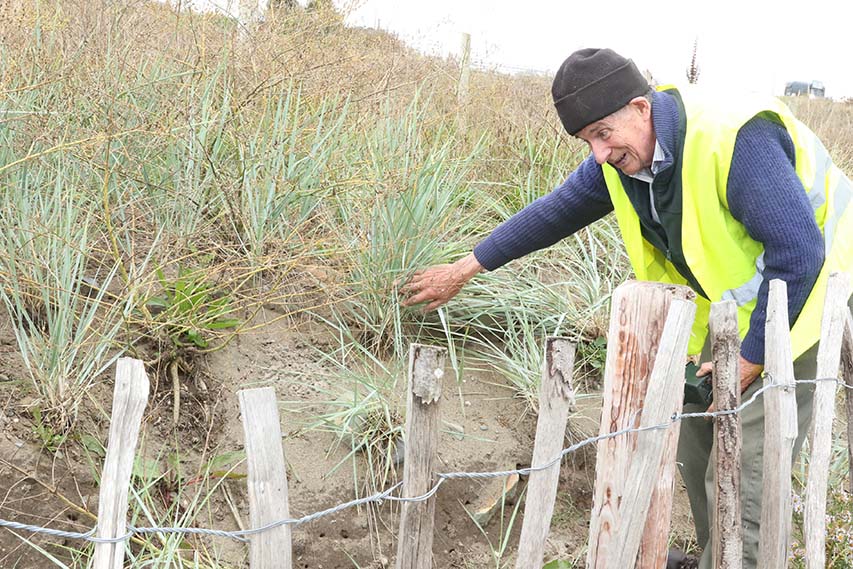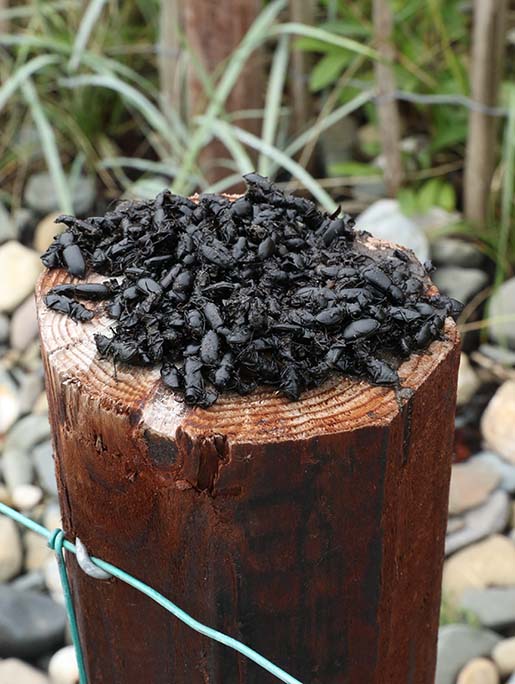A County Down environmental group plants out grasses at Ballyhornan beach
Lecale Conservation has been planting beach grass and wildflowers for the past few years at Ballyhornan beach in a bid to stem coastal erosion.
Volunteers have spent their evenings and weekends planting thousands of plant plugs in an attempt for the sand dunes to recover after very significant erosion.

(Photography by ©Jim Masson@DownNews).
David Becket, Lecale Conservation activist and treasurer, said: “Today we have planted so far almost 300 plugs of grasses. It is really making an excellent effort as you can see the dunes now getting bigger already in a relatively short space of time. It was Councillor Cadogan Enright who started this off and he has persisted with it over the past couple of years.
“People were driving over the dunes in motorbikes and quads and literally destroyed the fabric of a large area at the beach at Ballyhornan. We are now on the road to recovery but still a lot of work needs to be done yet, but we are getting there.”

(To help raise conservation awareness, Lecale Conservation planned their planting day to coincide with a celebration day on the beach held by Downpatrick Community Collective of the different groups they have worked with over the past year.)
Cllr Cadogan Enright took a break from the planting and explained the fundamental problem at Ballyhornan beach. He said: “Sand dunes are our first line of defence in coastal erosion. Our coastline generally is very vulnerable especially with rising sea level over the next couple of decades due to global warming.
“Basically the roots of the grasses and plants keep the sand together and the leaves of the plants slow down the drift of sand and allows it to build up.
“One area that we have replanted was flattened and is now up to 6-8 feet in places which is encouraging.”
Cllr Enright explained that Newry Mourne and Down District Council are responsible for a large area of the beach and after discussion with officers, he managed to get vulnerable areas fenced off to prevent people walking over the young plants. And Council also installed a pathway down to access the beach from the car park with steps.
“This has been a major improvement. Most of the sand dunes in Ireland are around 10,000 years old. They are our first line of defence. We must look after them.

“Our group received environmental training from An Taisce, an Irish environmental organisation, and we have worked to their advice. We went down to the coast of Kerry to receive this training.
“We have to concentrate on the upstream side first as the sea comes round the coast in a particular direction. When this planting beachhead is established it acts as a base to help regenerate adjacent sections along the coast. The beach then forms a new line and the dynamics of the incoming tides change slightly enough to allow the grasses to take hold and give the dunes a chance to grow.”
About 18 months ago, the Council funded a pilot scheme proposed by Cllr Enright and the group. This scheme has been a big learning curve after the DOE and Council finally agreed the areas that should be planted out. Cllr Enright said that the volunteers had planted over 2000 plugs of grass and flowers last year alone along in the designated areas.

“Many of these grasses are now two feet tall and growing,” he added. “That is encouraging in this short space of time. Our group arranged for Debbie Gillies based in Kilclief of True Harvest Seeds to gather seed and grow these grasses from scratch. She has made a huge contribution to this process working under a special DOE licence.
“The Council also secured permission from the Crown Estate who owns parts of the beach. It has been quite a challenge administratively to get to where we are. The combination of planting and fencing has worked well. We have worked with three separate grasses and wildflower plants.
“The first line we plant closest to the sea area is a row of sand couch grass. Then we plant in behind this rows of Lyme grasses. Further in we plant marram grass, and finally we put in a variety of wild beach flowers. This matrix of plants helps keep the sand in place and allows the dunes to grow.”

Ballyhornan beach loses sand twice a year but it comes back said Cllr Enright. But he expressed his concerns at erosion at Tyrella beach adding that there was only marram grass at Tyrella beach which does not like the salt water.
“I think Council should keeping an eye on the erosion at Ballyhornan and Tyrella beaches especially. Erosion is a problem along our whole coastline,” said Cllr Enright.
Despite the great efforts of all the volunteers over the past couple of years, much can be done by the general public themselves too to ensure that the beaches are kept clean and tidy, and the flora and fauna is not disturbed.
John Peacock, chairman of Lecale Conservation, who was helping out with the planting, said: “We made a startling and disturbing discovery as we collected litter along the beach. We came across a glass wine bottle left upright in the dunes and in it were the carcases of literally hundreds of small beetles which had become trapped.
“The dead insects were Violet Ground beetles, and their role in nature is to seek and consume organic, waste materials, carcases and the like.This removes breeding sites for bacteria in the environment dangerous to human and animal health.”
Check out this link about the beetles. They are an important part of the environment: https://theconversation.com/flesh-eating-bugs-new-research-shows-how-carrion-beetles-turn-death-into-life-160887?fbclid=IwAR2nMqyx7MW1_ADBdNojBiAGjBM20eZt9YmH7EjviU5GMaJl-V4idQXFXW8

“These tiny creatures are part of our delicate ecosystem. This example shows why we must take our rubbish home especially glass and plastic bottles.
“We need to take care of our environment better. That is our fundamental purpose, to try and educate people to manage the environment in a healthier and proper manner.”
(© Jim Masson / Down News. )

























